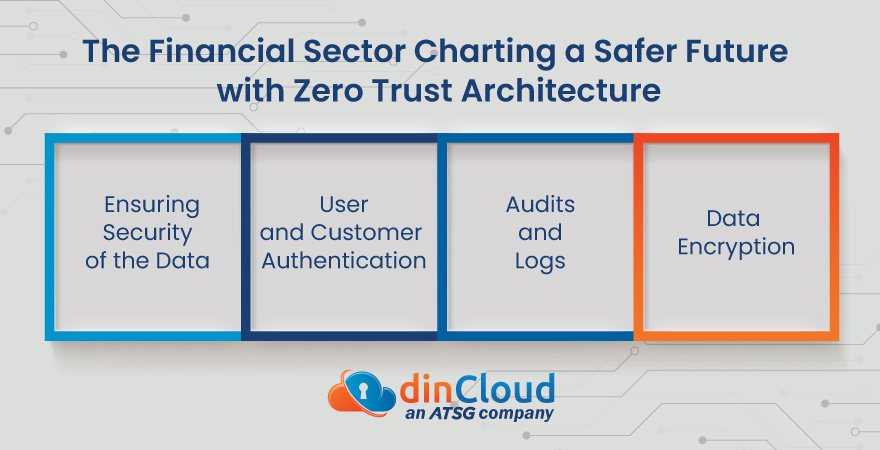Not too long ago, security personnel protected their IT infrastructures as though they were guards of the medieval era, protecting a walled city. The traditional security perimeters were rigid and difficult to access. However, the problem was that once bad actors were able to cross over from the outermost boundary, they instantly gained access to all the riches contained within.

Unfortunately, there have been numerous incidents where the “cybersecurity castle” got stormed, causing irrevocable damages. This sounds daunting for businesses, particularly for the financial sector, that cannot afford to expose their confidential Personally Identifiable Information (PII).
The good news is, things seem to have changed now. With Zero-trust network architectures, we have entered a new paradigm of cybersecurity, where no user or device can be perpetually trusted. It works on the assumption that data breaches can potentially occur at any time, and all end-point devices and end-users must be verified.
The invaluable data, intermittent data breach attempts, and strict regulations are increasingly compelling the financial sector to adopt Zero trust architectures, across their IT infrastructures.
In this post, we will explore a few ways we can create Zero-trust environments in the financial sector.
Ensuring Security of the Data
The backend database is extremely important for any enterprise, as it contains all the information and data needed to effectively run any business. It is imperative that these databases, containing confidential data and regulated information, successfully work in Zero-trust environments.
With an increasing number of Cloud hosted databases, the financial sector has also adopted a shared responsibility model to ensure the robust security of its databases. Cloud Service Providers (CSPs) look after the security of hardware resources (storage, network, CPU), while the financial companies and their development and operations (DevOps) team proactively safeguard the data that is stored within Cloud-based environments.
If all the key stakeholders have clarity about their security-related roles and responsibilities, they can create highly secure and resilient IT environments.
User and Customer Authentication
While financial organizations emphasize customer authentication, they should also ensure that their valuable databases are secure, on the other end of the spectrum. They can adopt various methods to authenticate users, before granting access to their databases. Entering their secure credentials is viewed as the base / preliminary layer of security.
Then, there comes the transport layer of security, and the Salted Challenge Response Authentication Mechanism (SCRAM), which makes eavesdropping attacks extremely difficult to execute.
They can also opt for password-less authentication, with auto-generated certificates.
Audits and Logs
The banking and financial organizations are part of a highly regulated industry. Therefore, they require constant monitoring of Zero trust environments. Every action should be logged, and filters must be applied in databases to capture particular events or user behaviors.
Financial enterprises can also enforce end-to-end operational control by applying role-based audits. It enables you to report/log activities by roles and gives insights regarding compliance best practices.
Data Encryption
Enterprises, particularly in the financial sector, can confidently move their data to Cloud-based environments with client-side field-level data encryption. Encrypted keys are controlled by organizations, and their database only deals with encrypted fields. This further clearly classifies security-related duties among database users, administrators and managers.
Conclusion
In the present times, transitioning from perimeter mentality and traditional security models has become a prerequisite for a robust cyber security posture. Financial institutions sit among the ones that need to adopt Zero-trust architectures on an urgent basis.
Businesses in general, and the financial sector in particular, have a lot at stake if bad actors manage to succeed in unauthorized data infiltrations. In such circumstances, the Zero-trust model is the best way forward to ensure the protection and security of valuable digital assets of an enterprise.
dinCloud, an ATSG company, offers state-of-the-art Cloud Computing solutions, which come with multiple layers of security that are integrated within our offerings.
With dinCloud’s Hosted Workspaces, you get easy-to-use, and highly secure solutions, built into our services. This allows you to focus on your core competencies and innovations while generating value for all the key stakeholders.


